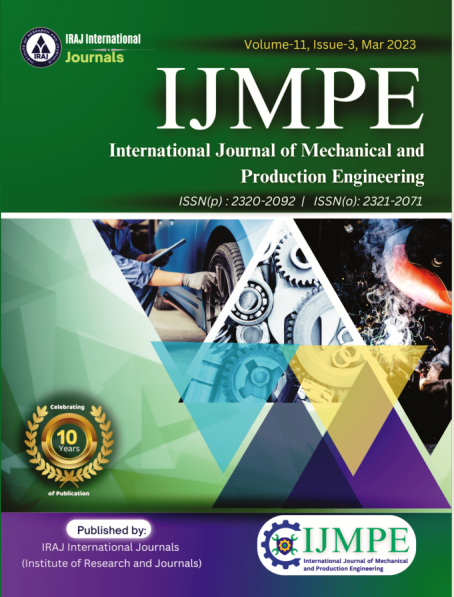Publish In |
International Journal of Mechanical and Production Engineering (IJMPE)-IJMPE |
 Journal Home Volume Issue |
||||||||
Issue |
Volume-5,Issue-12 ( Dec, 2017 ) | |||||||||
Paper Title |
Buildings Obstruction Effect on Power Performance of Small Wind Turbine Using 3 Turbulence Models CFD Technique | |||||||||
Author Name |
Krittapas Kongkapisuth, Wirachai Roynarin, Decha Intholo | |||||||||
Affilition |
Engineering Faculty, Rajamangala University of Technology Thanyaburi (RMUTT), PhathumthaniThailand 12110 | |||||||||
Pages |
62-70 | |||||||||
Abstract |
Horizontal Axis Wind Turbines (HAWTs) are commonly used in the wind energy sector. Small HAWTs are the most efficient wind machines that can harness wind energy to support on-grid and of-grid applications. The wind technologies are installed in urban areas near buildings or vegetation and these are known to obstruct wind flow. The basic challenges of wind turbines (WTs) installed in urban areas are low energy yield and unpredictability of stall due to the effects of turbulence wind flow arising from obstructions. This study focus on phenomenon associated with wind flow influence on three SWTs, 5kW HAWTs (WT1, WT2, and WT3), located at the Defense Energy Training Center (DTEC). The objective of the study is to investigate the wind turbines power performance effect as wind flow across building obstruction in DETC from South-West (SW) direction, one of main direction of wind flow in Thailand, using Computational Fluid Dynamics (CFD) k-ε, k-ω, and RNG turbulence model with allowing rotating region, rotational wind turbines, into CFD condition. From the results of CFD simulations compare to WT0, wind turbine without obstruction, it is observed that; using k-ε model, WT1-WT2 increased by 7.73 %, and 5.68 % respectively while WT3 decreased by 7.50 %. Using k-ω model, WT1-WT2 increased by 9.84 %, and 14.54 % respectively while WT3 decreased by 2.23 %. Using RNG model,WT1-WT2 increased by 6.41 %, and 10.60 % respectively while WT3 decreased by 5.19 %. For the results of power performance effect, wind turbines in buildings obstruction wind flow area does not always created low energy yield due to the fact that they may cause Venturi effect, steeply wind shear gradient, etc. that can create increased or decreased power performance. And also from the CFD, the three turbulence models displayed show similar results that affirmed that this technique is highly reliable. However, the most significant procedure of this CFD technique is allowing rotating region, rotational wind turbines, into CFD condition. Index Terms - Computational Fluid Dynamics (CFD), Horizontal Axis Wind Turbines (HAWTs), Building obstruction wind flow area, CFD k-ε, k-ω, and RNG turbulence model. | |||||||||
| View Paper | ||||||||||